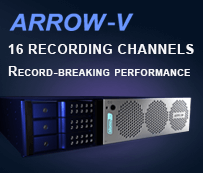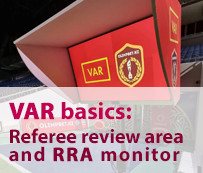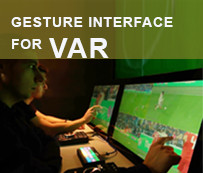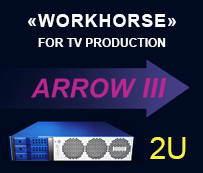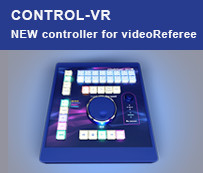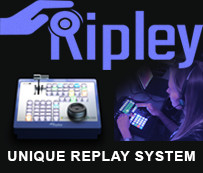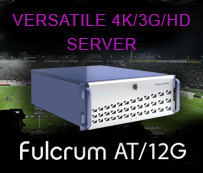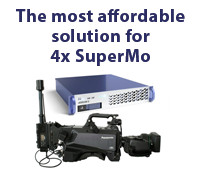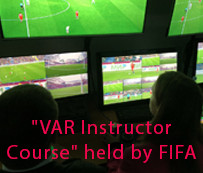- Details
NAB in Las Vegas will see the world premiere of two new 4K 50/60p slow-motion replay servers. Slomo.tv will show at its booth SL6321 the RED ARROW and BlackJack 4K — two new product family members. RED ARROW offers four channels recording, four channels search and two channels playback with six 4K physical video ports – all in 4K 50/60p in a single 2RU enclosure. BlackJack 4K offers three recording, three search and two playback in 4K 50p/4K 60p in a single 4RU enclosure.
RED ARROW has 24 reversible 3G/HD SDI video ports: Due to its four graphical ports RED ARROW allows for four operators working on one machine together at the same time — for example, two operators work with configuration 662 (6 recording, 6 search and 2 playback channels), the other two with configuration 442 (4 recording, 4 search and 2 playback channels). While working on one machine, simultaneously each operator has its own display that can function as main interface or multiviewer.
The system interface has a built-in multiviewer that provides monitoring of input and output signals and search using one standard 1920×1080 computer monitor. The SSD based RED ARROW provides storage of 266 hours 100Mbit HD video. The built-in DMR SATA slots can accommodate nine (9) 3.5″ SATA drives that can record 18 channels in ProRes 422 and 18 Proxy SD channels or 24 channels DVCPro HD with SD Proxy.
- Details
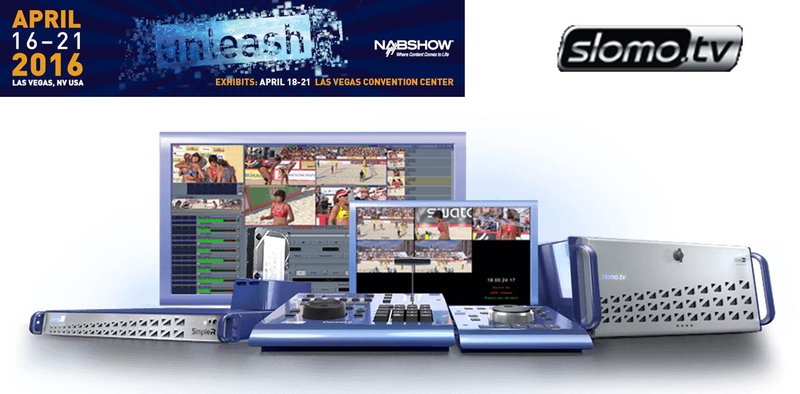
NAB Show in Las Vegas will see the world premiere of two new 4K 50/60p slow-motion replay servers. Slomo.tv will show at their booth SL6321 the RED ARROW and BlackJack 4K - two new product family members that push the boundaries of slow-motion replay servers even further. With these new products the company once again sets new standards RED ARROW offers 4 channels recording, 4 channels search and 2 channels playback with six 4K physical video ports – all in 4K 50/60p in a single 2RU enclosure. BlackJack 4K offers 3 recording, 3 search and 2 playback in 4K 50p/4K 60p in a single 4RU enclosure.
RED ARROW
With a single 2RU enclosure RED ARROW is the most powerful replay and slow-motion server in the world. RED ARROW offers simultaneously 4 channels recording, 4 channels search and 2 channels playback with six 4K physical video ports – all in 4K 50/60p. It can also be used for 6 channel 4K recording for non-linear editing. For 4K video interchange Apple ProRes 422 is used.
RED ARROW has 24 reversible 3G/HD SDI video ports: Due to its 4 graphical ports RED ARROW allows for 4 operators working on one machine together at the same time. For example, two operators work with configuration 662 (6 recording, 6 search and 2 playback channels), the other two with configuration 442 (4 recording, 4 search and 2 playback channels). While working on one machine, simultaneously each operator has its own display that can function as main interface or multiviewer.
- Details
The video system integrates with official game information, including timings, in accordance with FIBA requirements.
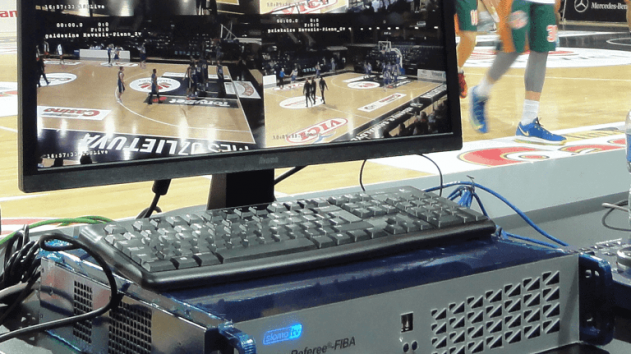
New high-tech basketball video judging systems are taking their place courtside in international basketball, with word that the Lithuanian Basketball League / Lietuvos krepšinio lyga (LKL) is now using five new videoReferee®-B systems from Slomo TV.
Slomo.tv produces broadcast replay servers and video judging platforms for live sports productions, and its main videoReferee® system can be specially configured for different applications and specific conditions, such as those laid down for basketball by international sporting agency FIBA.
LKL currently holds fourth place in FIBA’s ranking of men’s basketball.
- Details
BINGEN, GER: In December Broadcast Solutions held its Broadcast Innovation Day at the company's headquarters in Germany. During the event visitors had the chance to witness the world premiere of two new members to the slomo.tv product family. With BlackJack 4K and Arrow 4K the company once again sets a new standard in slow motion servers. Initially planned for this years' NAB show both products were shown for the first time at the Broadcast Innovation Day and are available immediately.
BlackJack
With the only 3 IN 2 OUT 4K 50p server available in a single enclosure, again the manufacturer underlines its ambition to be one step ahead of the competition. With the brand new BlackJack 3G optionally 16 channels 3G can be recorded and up to 3 operators can edit 4 channels (slomo and highlights) with independent crossfade outputs – or it may just work as a 5-channel 4K 50p slow motion machine. Both varieties provide the usual comprehensive features that slomo.tv offers on all platforms.
12TB SSD - enough to record 266h HD with 100 Mbit/s are already on board. On all 12 input channels DMR is available. slomo.tv offers this unique engine with the capability to transcode all channels live during recording thus providing all content without delay to the external drives for further processing. With BlackJack all material is available in nearly all popular codecs - up to Apple Pro Res HQ 444.
- Details
On 9 December 2015, Broadcast Solutions held its Broadcast Innovation Day at the company's headquarters in Germany. During the event, visitors had the chance to witness the premiere of two new members to the slomo.tv product family.
BlackJack
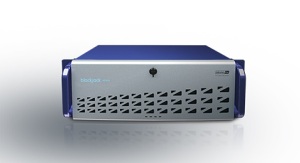
With the BlackJack 3G, optionally 16 channels 3G can be recorded and up to three operators can edit four channels (slomo and highlights) with independent crossfade outputs – or it may just work as a 5-channel 4K 50p slow motion machine. Both varieties provide the usual comprehensive features that slomo.tv offers on all platforms. 12TB SSD – enough to record 266h HD with 100 Mbit/s are already on board. On all 12 input channels DMR™ is available. slomo.tv offers this engine with the capability to transcode all channels live during recording thus providing all content without delay to the external drives for further processing. With BlackJack 3G all material is available in nearly all popular codecs – up to Apple Pro Res HQ 444.
Arrow
With Arrow, slomo.tv offers a new 2RU server that provides the full range of functions inherent to the Simple R series. Only the storage has been replaced by conventional HDDs. If space is not an issue Arrow devices are a cost effective alternative to Simple R servers. Arrow now makes professional video recording and live replay (slow motion) equipment available to companies that previously considered professional live replay gear unattainable due to budget reasons.



